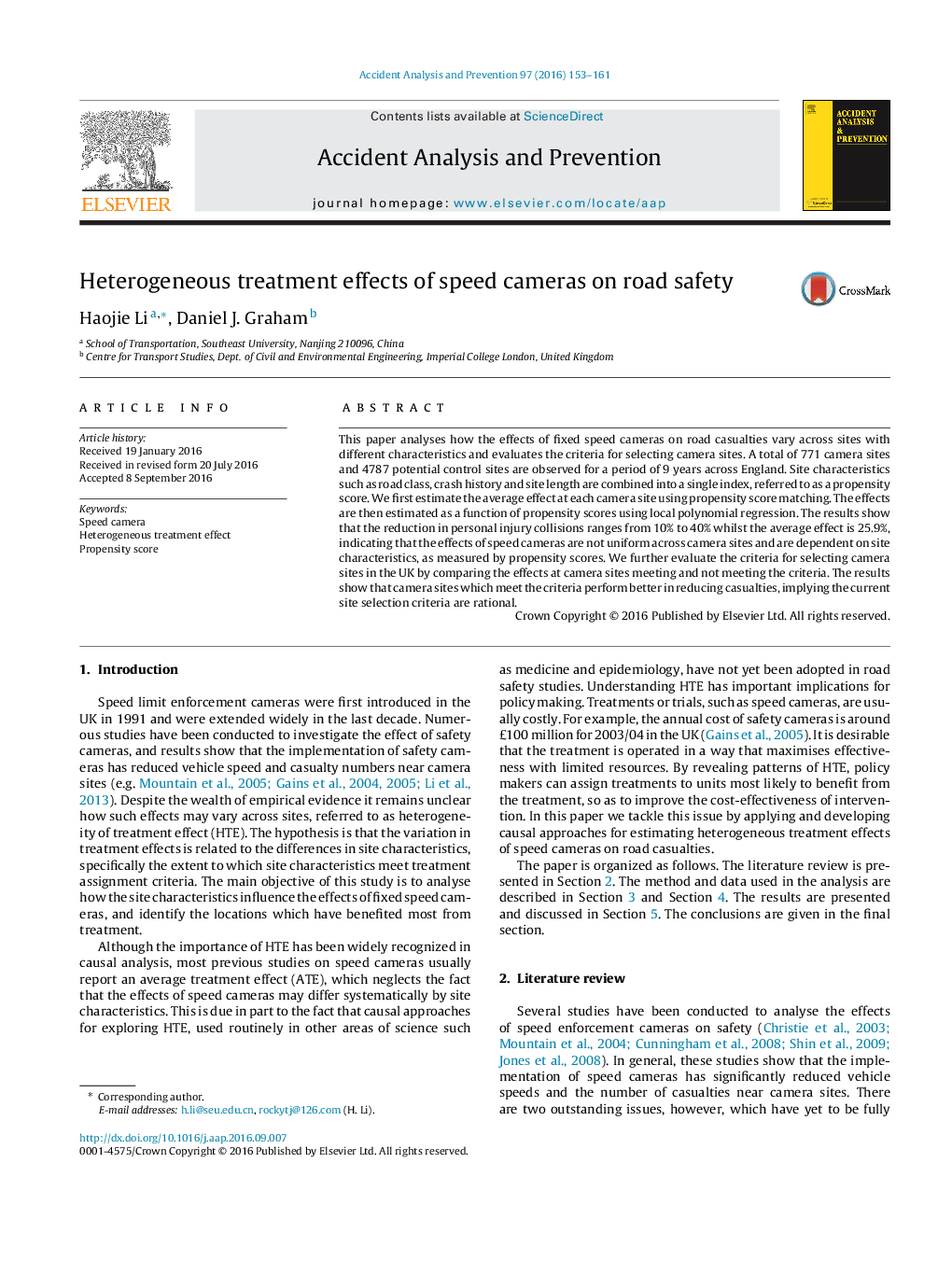| Article ID | Journal | Published Year | Pages | File Type |
|---|---|---|---|---|
| 4978922 | Accident Analysis & Prevention | 2016 | 9 Pages |
Abstract
This paper analyses how the effects of fixed speed cameras on road casualties vary across sites with different characteristics and evaluates the criteria for selecting camera sites. A total of 771 camera sites and 4787 potential control sites are observed for a period of 9 years across England. Site characteristics such as road class, crash history and site length are combined into a single index, referred to as a propensity score. We first estimate the average effect at each camera site using propensity score matching. The effects are then estimated as a function of propensity scores using local polynomial regression. The results show that the reduction in personal injury collisions ranges from 10% to 40% whilst the average effect is 25.9%, indicating that the effects of speed cameras are not uniform across camera sites and are dependent on site characteristics, as measured by propensity scores. We further evaluate the criteria for selecting camera sites in the UK by comparing the effects at camera sites meeting and not meeting the criteria. The results show that camera sites which meet the criteria perform better in reducing casualties, implying the current site selection criteria are rational.
Keywords
Related Topics
Physical Sciences and Engineering
Chemical Engineering
Chemical Health and Safety
Authors
Haojie Li, Daniel J. Graham,
